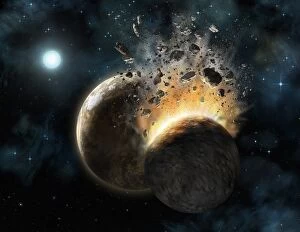End Of The World Collection (page 6)
"Unveiling the Terrifying Beauty: A Glimpse into the End of the World" In a world where art imitates life
All Professionally Made to Order for Quick Shipping
"Unveiling the Terrifying Beauty: A Glimpse into the End of the World" In a world where art imitates life, these haunting masterpieces transport us to a realm where darkness prevails and humanity teeters on the edge of oblivion. From Peter Bruegel's "Triumph of Death" to Gustave Dore's chilling illustration for The Bible, each stroke of paint or etched line reveals an apocalyptic vision that sends shivers down our spines. Bruegel's "Triumph of Death, " painted in 1562, depicts a desolate landscape overrun by skeletal figures and decaying corpses. It serves as a stark reminder that death is an inevitable fate awaiting all living beings. Similarly, Hans Holbein the Younger's "The End of Mankind" captures the essence of despair as mankind faces its ultimate demise. The Apocalypse Tapestry or Apocalypse of Angers, created between 1375-80, weaves together intricate scenes portraying destruction and chaos. These tapestries serve as harbingers of doom with their vivid depictions of fire raining from the sky and monstrous creatures emerging from dark corners. Among these nightmarish visions emerge The Four Horsemen - symbols synonymous with cataclysmic events. In Albrecht Durer's engraving from 1511, they gallop forth on their steeds; War brandishing his sword, Famine holding scales tipped towards starvation, Pestilence spreading disease like wildfire, and finally Death himself astride a pale horse followed closely by Hell. Gustave Dore adds another layer to this grim narrative with his illustration showcasing Death riding upon his pale mount in eerie harmony with biblical prophecy. As he passes through our mortal realm, Hell follows relentlessly at his heels – an ominous signifier that damnation awaits those left behind. Even amidst Bosch’s surreal masterpiece "The Garden Of Earthly Delights, " we find a panel dedicated to the horrors of Hell.











